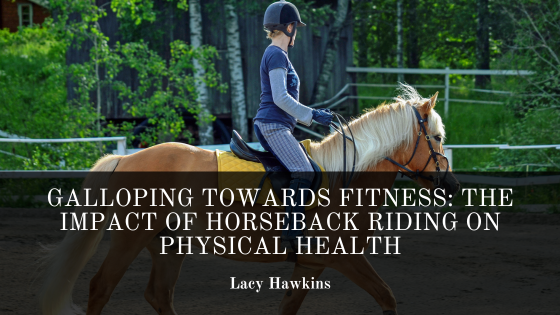Horseback riding isn’t just a leisure activity or a competitive sport; it’s also a fantastic way to enhance physical fitness. Beyond the picturesque landscapes and the bond between rider and horse lies a workout that engages various muscle groups and enhances balance. Let’s delve into how horseback riding can significantly improve strength and balance.
Building Core Strength:
At the heart of horseback riding is core engagement. Maintaining stability in the saddle requires constant activation of core muscles. With each stride of the horse, riders must adjust their posture, engage their abdominal muscles, and stabilize their pelvis to maintain balance. This continuous engagement of the core muscles strengthens not only the abdominals but also the muscles of the lower back, hips, and pelvis.
Leg and Lower Body Development:
The leg muscles are heavily engaged during horseback riding. Riders use their legs to communicate with the horse, cueing for movement and maintaining proper position. The action of gripping the horse with the legs, especially during trotting and cantering, strengthens the quadriceps, hamstrings, calves, and inner thigh muscles. Over time, this leads to improved muscle tone and endurance in the lower body.
Enhancing Balance and Coordination:
Balance is fundamental to horseback riding. Riders must adjust their balance constantly to accommodate the horse’s movements. As the horse shifts its weight, the rider must counterbalance to stay centered in the saddle. This dynamic interaction enhances proprioception – the body’s awareness of its position in space – and improves overall balance and coordination.
Improving Posture:
Good posture is essential for effective riding. Riders must maintain a straight back, relaxed shoulders, and aligned pelvis to communicate effectively with the horse and maintain balance. Regular riding helps strengthen the muscles responsible for posture, leading to improved alignment both on and off the horse.
Cardiovascular Benefits:
While horseback riding may not seem as intense as traditional cardiovascular exercises like running or cycling, it still offers significant benefits for heart health. Depending on the intensity of the ride, riders can experience an increase in heart rate and blood circulation. Trotting and cantering, in particular, provide a moderate cardiovascular workout, improving endurance over time.
Mind-Body Connection:
Beyond the physical benefits, horseback riding fosters a strong mind-body connection. Riders must be attuned to their horse’s movements, anticipate their actions, and respond accordingly. This heightened awareness cultivates focus, concentration, and mindfulness – all of which contribute to overall well-being.
Horseback riding offers a holistic approach to physical fitness, targeting strength, balance, coordination, and cardiovascular health. Whether you’re a beginner or an experienced rider, the benefits of regular riding are undeniable. So, saddle up, feel the rhythm of hoofbeats beneath you, and experience the transformative power of horseback riding on your physical fitness journey.
